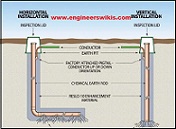hydrochlorofluorocarbons sources
Hydrochlorofluorocarbons (HCFCs) are a class of chemical compounds that contain hydrogen, chlorine, fluorine, and carbon atoms. They were developed as alternatives to chlorofluorocarbons (CFCs) due to their lower ozone depletion potential (ODP). HCFCs have been …



